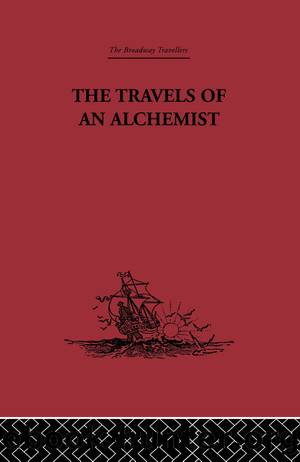The Travels of an Alchemist by Li Chih-Ch'ang

Author:Li Chih-Ch'ang [Chih-Ch'ang, Li]
Language: eng
Format: epub
Tags: History, Asia, General
ISBN: 9780415344906
Google: gXiRmCPC2OcC
Publisher: Psychology Press
Published: 2005-01-15T01:22:37+00:00
CHAPTER II
THE envoy Li was going to China, and the Master gave him a poem addressed to the Taoist community in the east. The Master was now back in his old quarters, which Stood on the northern heights some hundred feet above a clear Stream, the waters of which come from the Snow Mountains and are therefore very cold. In the fifth month, when the hot season began, he would lie in a verandah at the back of the house, with the wind blowing on him. At night he slept on a terrace at the top of the building. In the sixth month, when the hot season is at its height, he bathed in the lake; and thus, although he was so far from home, his existence was by no means disagreeable.
The arable land in the district: is suitable for the cultivation of most kinds of corn; but buckwheat and the soya-bean are not grown. Wheat ripens in the fourth month. The people here have their own way of harvesting it: they simply Stack it in heaps and fetch a little to grind as they require it. By the sixth month the crops are all cut. Mr. Li, the intendant of the Governor (Yeh-lü A-hai) presented us with five acres of melon-field. The melons are extraordinarily sweet and fragrant; there are none quite like them in China. Some of them are as large as a peck-measure.
In the sixth month the second prince (Chagatai) came back to Samarkand and Liu WÄn begged from us some of these melons to give as a present to the prince. Ten of them weighed a full hod.1 Fruit and vegetables are very abundant; the only sort lacking are the colocasia and chesstnut. The aubergines are like huge coarse fingers, purple-black in colour.
Both men and women plait their hair. The menâs hats are often like yüan-shan-mao,2 trimmed with all kinds of coloured stuffs, which are embroidered with cloud-patterns, and from the hats hang tasseled pendants. They are worn by all holders of official rank, from the notables downwards. The common people merely wear round their heads a piece of white muslin about six feet long. The wives of rich or important people wind round their heads a piece of black or purple gauze some six or seven feet long. This sometimes has flowers embroidered on it or woven patterns. The hair is always worn hanging down. Some cover it in a bag of floss-silk which may be either plain or coloured; others wear a bag of cloth or plain silk. Those who cover their heads with cotton or silk look just like Buddhist nuns. It is the women of the common people who do so. Their clothes are generally made of cotton, sewn like a straining-bag, narrow at the top and wide at the bottom, with sleeves sewn on. This is called the under robe and is worn by men and women alike. Their carriages, boats and agricultural implements are made very differently from ours. Their vessels are usually of brass or copper; sometimes of porcelain.
Download
This site does not store any files on its server. We only index and link to content provided by other sites. Please contact the content providers to delete copyright contents if any and email us, we'll remove relevant links or contents immediately.
| Confucianism | Feng Shui |
| I Ching | Jainism |
| Karma | Shintoism |
| Sikhism | Tao Te Ching |
| Taoism | Tibetan Book of the Dead |
| Zoroastrianism |
The Tao of Physics by Fritjof Capra(1842)
The Diamond Cutter by Geshe Michael Roach(1669)
Feng Shui by Stephen Skinner(1615)
Human Design by Chetan Parkyn(1570)
The Alchemy of Sexual Energy by Mantak Chia(1487)
Tao Te Ching by Lao Tzu(1483)
365 Tao: Daily Meditations by Ming-Dao Deng(1300)
Tao Tantric Arts for Women by Minke de Vos(1258)
Sun Tzu's The Art of War by Giles Lionel Minford John Tzu Sun(1240)
Karma-Yoga and Bhakti-Yoga by Swami Vivekananda(1218)
Sidney Sheldon (1982) Master Of The Game by Sidney Sheldon(1184)
Buddhism 101 by Arnie Kozak(1183)
The Analects of Confucius by Burton Watson(1142)
The Art of War Other Classics of Eastern Philosophy by Sun Tzu Lao-Tzu Confucius Mencius(1139)
The New Bohemians Handbook by Justina Blakeney(1102)
Tao te ching by Lao Tzu(1076)
The Way of Chuang Tzu by Thomas Merton(1068)
The Sayings Of by Confucius(1026)
Bless This House by Donna Henes(989)
